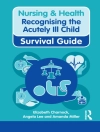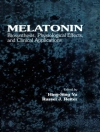This guide provides practical information for the care of patients with blunt injuries. It covers the care for truncal injuries (head, chest, abdomen) and fracture care of the extremities, the pelvis and the spine in a condensed fashion. Unlike previous, anatomically oriented outlines, this combines the anatomic location with frequent injury combinations. It is written for orthopedic and trauma surgeons, offering them a condensed outline of fracture treatment. In addition, all aspects of trauma care are covered, including associated injuries that may alter the decision making in patients with polytrauma.
Spis treści
Impact of trauma on society.- Economic aspects of trauma care.- Evidence based orthopaedic trauma care.- Local inflammatory changes induced by fractures and soft tissue injuries.- Pathophysiology of polytrauma.- Head injuries – neurosurgical and orthopaedic strategies.- Nerve injuries in the face of adjacent fractures – when to explore / suture / transplant?-Chest trauma – classification and influence on the general management.- Abdominal injuries – indications for surgery.- Management of pelvic ring injuries.- Urological injuries in polytrauma.- Fracture management.- Mangled extremity: management in isolated extremity injuries and in polytrauma.- Management of spine fractures.- Polytrauma in the ancient patient.- Polytrauma in young children.- Fracture management in the pregnant patient.- Open fractures – initial management.- Vascular injuries: Indications for stents, timing of vascular and orthopaedic surgery.- Management of articular fractures.- Techniques of soft tissue coveragein open fractures- Outcome after primary amputation injuries, subtotal amputation injuries, and severe open fractures with nerve injuries.- High energy injuries caused by penetrating trauma.- Management of traumatic bone defects.- Acute soft tissue and bone infections.- Chronic osteomyelitis.- Management of malunions and nonunions in patients with multiple injuries.- PTSD and psychological squelae after severe trauma.- Late outcome after severe fractures.
O autorze
Dr. Hans-Christoph Pape completed his residency in trauma surgery at Hannover Medical School, and while an attending orthopedic and trauma surgeon at Hannover he was appointed as Professor of Trauma Surgery. Between 2003 and 2005 he was also a Visiting Professor at Harvard Medical School, the University of Alabama, and the University of Texas. Between 2005 and 2009 Dr. Pape was Associate Professor in Traumatology at the University of Pittsburgh Medical Centre, and he is currently W. Pauwels Professor and Chairman of the Department of Orthopaedic/Trauma Surgery at the University of Aachen Medical Centre, Germany. During his career, Dr. Pape has received many awards of note, including the 2005 Novartis Prize, the 2006 Swiss AO Foundation Annual Award, and the 2008 Kappa Delta Award from the American Academy of Orthopedic Surgeons. He is the Editor in Chief for Open Access Emergency Medicine, a Section Editor for Injury and the European Journal of Trauma, and an editorial board member for Operative Techniques in Orthopaedics, Journal of Trauma, Infection and Critical Care, and Patient Safety in Surgery. Dr. Pape has been the lead author on 78 publications in peer-reviewed journals, and co-author of a further 162. He is also the editor or author of several important books, has written a large number of book chapters and has led many courses on polytrauma management. Roy W. Sanders, M.D.: Editor-in-Chief: Journal of Orthopedic Trauma, President of Florida Orthopedic Institute, Director of the Orthopedic Trauma Service, several prestigious awards. Joe Borelli, M.D.: Professor and Chairman of the Southwest Medical Center, Dallas, USA; Board: American Board of Orthopedic Surgery, several prestigious awards.












